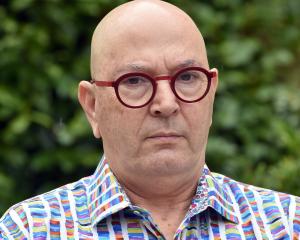
As part of Hospice Awareness Week (May 12-18), the region is being asked to imagine a loved one with a terminal illness not having access to the palliative care the hospice provides.
Otago Community Hospice chief executive officer Ginny Green said its running costs were escalating, but funding was not.
It was not alone in the situation.
The cost of running hospice services across the country had increased "massively" in recent years, but government funding had not adjusted for rising costs, leaving many hospices struggling to cover the cost of their service, she said.
"We are running as leanly as possible.
"We have made cuts in overheads without impacting delivery, and introduced innovative solutions to ensure our service remains sustainable.
"But heading into the new financial year, we are anxious about the deficit we are facing."
The government funded about 50% of hospice operating costs, and the other 50% of funding was raised in the community.
However, Ms Green said as the cost of living increased, the ability for the community to fund the balance was limited.
Total expenditure across the nation’s publicly contracted hospices would exceed the total revenues from government and community sources in less than 12 months.
The shortfall was projected to reach $196 million by 2045, as costs continued to increase and New Zealand’s population grew and aged.
In Otago in 2019, 684 people received hospice care. That number had increased to more than 1000 last year.
Nationwide, 10,880 people received hospice care in 2023. That number was expected to have increased by 53% in 2045.
Otago Community Hospice supports people with terminal illness to live and die well.
Its multidisciplinary team includes community care co-ordinators, palliative specialist doctors, counsellors, social workers and a residential care support team, who all work closely with GPs, hospitals and district nurses.
However, without making drastic changes to how their services were delivered, hospices would fail to meet the growing demand if the government did not change its funding model.
To meet the urgent shortfall of today, and remain sustainable into the future, Ms Green called for the government to rethink how it funded hospice services.
Hospices saved the health system about $110m every year and delivered a conservative return on investment of $1.59 for every $1 of government funding.
They also generated $48m in quality-of-life improvements, $2.6m in wellbeing benefits and $468,000 in out-of-pocket cost savings for families.
"The value to patients goes beyond money.
"From avoiding unnecessary trips to emergency departments, to timely medical care and whānau support, hospices make a real difference in our communities."
People could help Otago Community Hospice by writing to their local and national MPs, and sharing Hospice Awareness Week social media posts calling for fairer funding, she said.
"Our fundraising target for the present financial year is $5m, which equates to more than $13,000 every day.
"High quality donations to our hospice shops are always greatly appreciated, and people can also help by making a cash donation during Hospice Awareness Week.
"We will continue to rely heavily on our community until there is a government fix."












